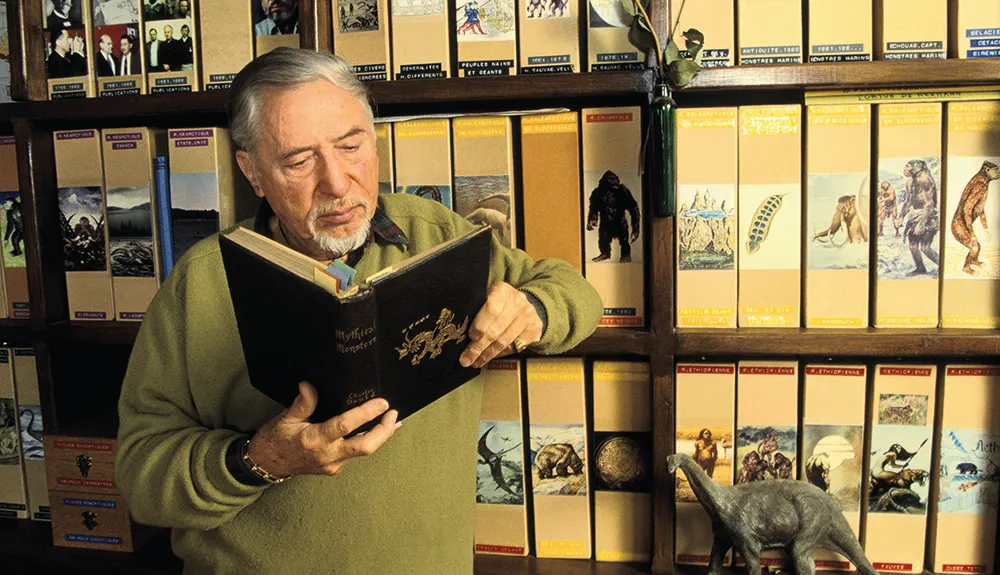1933
Mr and Mrs Spicer describe a large, blob-shaped animal in the waters of Loch Ness, seen bounding across the road in front of their car. It triggers interest in Nessie and is covered by the national newspapers.
Ivan Sanderson (1911-1973)
This Scottish biologist worked with Bernard Heuvelmans to devise many ideas about cryptids.
He travelled widely in pursuit of animals and wrote a lot of books.
Read more about the hunt for the Loch Ness Monster:
- How do we know that the Loch Ness Monster doesn't exist?
- Operation Deepscan: the hunt for the Loch Ness Monster
- The genetic hunt for the Loch Ness Monster
- Loch Ness Monster DNA reveals 'plausible' explanation for sightings
- Loch Ness: How eDNA helps us discover what lurks beneath
Bernard Heuvelmans (1916-2001)

Heuvelmans was the main proponent of cryptozoology. He wrote books and articles, and devised a number of ideas on the evolution of cryptids.
1958
Heuvelmans publishes the English version of his book, On The Track Of Unknown Animals. It makes the case for Yetis and others as genuine animals.

Tim Dinsdale (1924-1987)
This aeronautical engineer achieved fame for his passionate interest in the Loch Ness Monster. He went in search of it on numerous occasions, with the intention of filming it.
1967
At Bluff Creek, California, Roger Patterson and Bob Gimlin film a large biped who matches Bigfoot descriptions. Debate rages over the film’s authenticity.

1972
Underwater photos taken at Loch Ness seemingly depict huge, diamond-shaped flippers.

Confidence in Nessie’s existence is so high that two experts publish a scientific name for the beast: Nessiteras rhombopteryx.
Michel Meurger (1946-)
This folklorist argues that our ideas about monsters are continuations of folk stories. Creature sightings, he explains, are always interpreted within a ‘cultural landscape’.
1982
Heuvelmans' International Society of Cryptozoology is formed.
It encourages an evidence-led, sceptical approach to monster sightings, but also attracts weird, scientifically dubious claims.
It folds in 1998 due to financial problems.
Adrian Shine (1949-)

This scientist is a leading expert on Loch Ness, its history, ecology and biology, as well as being a noted sceptic.
He has led numerous expeditions, including Operation Deepscan, and has tested many ideas about Nessie’s existence.
- This article first appeared in issue 298 of BBC Science Focus–find out how to subscribe here

